|
|
Esquilino Obelisk
| Present Site: | Piazza dell'Esquilino, Rome (North side of Basilica di Santa Maria Maggiore) N 41°53'53.4"(41.898167) E 12°29'51"(12.4975) |
| Pharaoh: | Probably a replica by Romans in AD 1 Century |
| Measurement: | 14.75 meters high for the obelisk itself 29.53 meters high including the Pedestal |
| Weight: | Estimated 235 tons |
| Stone: | Red granite |
About The Site:
This obelisk is placed in Piazza dell'Esquilino, which is the back side (Northern side) of Basilica di Santa Maria Maggiore.
In 1980, Basilica di Santa Maria Maggiore has been designated a World Heritage Site by UNESCO, as one of the cathedral of "Historic Centre of Rome, the Properties of the Holy See in that City Enjoying Extraterritorial Rights and San Paolo Fuori le Mura".
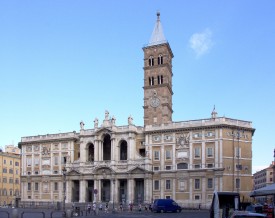 Bascilica di Santa Maria Maggiore
Bascilica di Santa Maria MaggioreThe obelisk is in the back of the Basilica |
How To Get There:
For the Piazza dell'Esquilino, I would recommend to go here from the front of Termini Station (Stazione Termini) by walk. It's through Via Cavour, about 300 meters of South West direction, 4 blocks ahead. Since this Piazza (Square) is in the back side (Northern side) of Basilica di Santa Maria Maggiore, you should go there with looking up the Basilica with your guide book.
About The Obelisk:
This obelisk is 25.53 meters high (long) including the pedestal, and 14.75 meters for obelisk itself. As you see the pictures below, nothing is inscribed on the obelisk. Hence the origin of this obelisk is unknown.
This obelisk was discovered in 1519, in 3 separate parts, underground near the Great Tomb of Emperor Augustus [Mausoleo di Augusto]. Another one of the pair obelisks was discovered in 1581 at the same site.
Therefore, those two obelisks were considered to be built at the entrance of unknown building of the Tomb. However, no ruin of the building is undiscovered yet so far.
These obelisks are assumed that are processed and mabe in Italy in 1st Century with using the Egyptian stone, for the Great Tomb of Emperor Augustus, which was built in 28 BC, and used for the grave of Julio-Claudian dynasty family until end of 1st Century.
Among of two obelisks, the one of 1519 is here in Piazza dell'Esquilino, which is erected in 1587 by Pope Sixtus V [reigned 1585-1590], Another pair of companion is in Piazza del Quirinale.
This obelisk does not have pyramidion. Its top is in the state cut into a flat stone. This is common point with the obelisk at Piazza del Quirinale. For ancient Egyptians, the pyramidion had an important meaning. However the Romans did not understand it.
This is evidence that these obelisks were made by the Romans.
A Danish Egyptologist Erik Iversen infers that these obelisks (Esquilino and Quirinale) would be made with copying the obelisks which ware once standing in front of the Caesarium Temple in Alexandria, currently in London and New York, which is called as "Needle of Cleopatra".
Notes For Pictures:
I believe this one is worth looking among many obelisks in Rome. You should visit here as this is easy to visit as near from the Termini Central Station.
Since the Basilica di Santa Maria Maggiore is facing the Southeast, the obelisk is also standing out of four accurate directions, North, South, East and West.
Below pictures indicate Northwest, Southwest, Southeast, and Northeast.
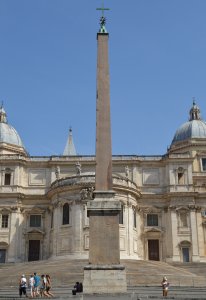
Northwest Side |
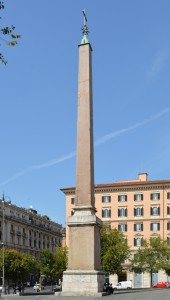 Southwest Side |
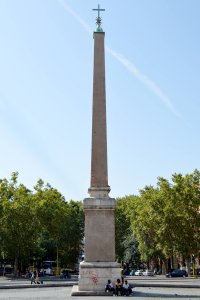 Southeast Side |
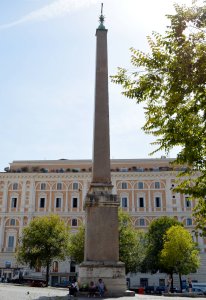 Northeast Side |
|||
August 11, 2014 by Hiroyuki Nagase (For high definition image, please click the picture) | ||||||
Copyright Hiroyuki Nagase nagase@obelisks.org and Shoji Okamoto okamoto@obelisks.org